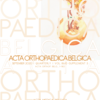Birmingham hip resurfacing and the ASR at a minimum of 10 years : a prospective cohort study
Hip ; resurfacing ; metal-on-metal ; revision arthroplasty
Published online: Jun 12 2021
Abstract
We performed a prospective cohort study to assess whether the Birmingham Hip Resurfacing (BHR) and ASR are compliant with NICE guideline recom- mendations at 10 years. This is the first study in the literature to directly compare these two implants with respect to their NICE-compliance rates.
Only ASR and BHR implants were included in the analysis. Patients were prospectively reviewed at 6 months, 2 years, 5 years and 10 years. Outcome measures included the following : revision, re-revi- sion, cause for revision, time to revision, length of stay (LOS) and Western Ontario and McMaster Universities Osteoarthritis Index (WOMAC) scores at each review.
Three hundred and ninety-two hip resurfacings were performed on 364 patients. For the ASR, 26/119 implants were revised giving a 78.2% 10-year survival rate. The BHR had a 95.7% 10-year survival rate, in keeping with NICE recommendations. The ASR had a significantly higher all-cause revision rate when compared to the BHR at 10 years (p<0.05).
BHR is a NICE-compliant implant at 10 years . The ASR fell short of NICE 10-year recommended revision rates in just under 2 years. We suggest that the BHR still has a role in hip osteoarthritis hip in high-demand males.
